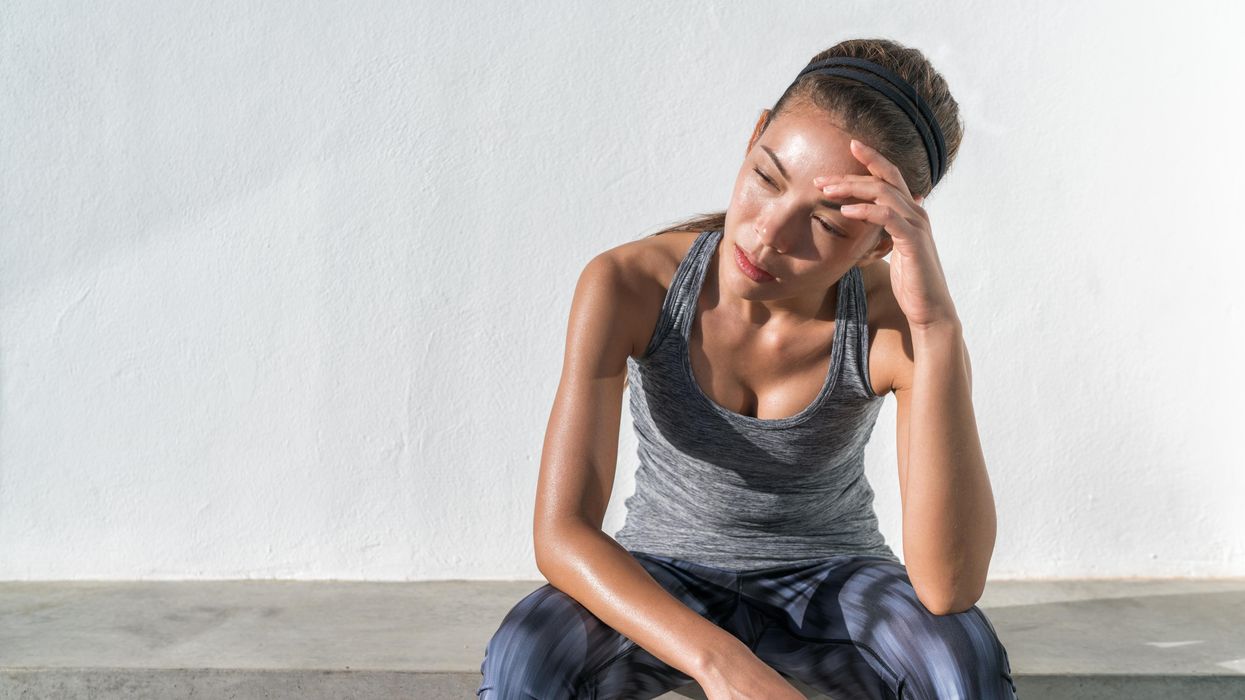How the Pandemic Changed Dancers’ Relationship With Stress
Fatigued muscles, brain overload and pre-performance nerves are only a few of the stressors dancers endured before COVID-19 interrupted our ecosystem.
But over the past year, the pandemic morphed our preexisting stressors into different ones. We grappled with uncertainties related to health, safety and financial security. We asked ourselves questions like “What if I lose my technique—or even my job?” and “How much longer will I have to angle the perimeter of my marley square?” and “When will I be able to safely dance with others who aren’t in my bubble?”
As our relationship with stress was rapidly reshaped—and many common methods of de-stressing were put on hold—dancers found alternative ways of coping with living through and emerging from a pandemic.
Many artists, if not most, felt their overall degree of stress peak within the past year. “Chronic stress does affect your physical health as well as your mental health,” says Dr. Leigh Skvarla, a peak-performance consultant and national certified counselor who works with dancers and athletes. “Physically, we know that the secretion of cortisol, as well as the hormones like epinephrine, adrenaline and norepinephrine, can have a suppressing effect on the immune system.” This secretion of cortisol can make you more susceptible to illness.
Altered Routines
Amidst COVID-19, every dancer was challenged with individual obstacles. Some felt isolated, unsociable and, for lack of a better phrase, locked in.
Compare that with pre-pandemic times, when most dancers had some sort of routines in place that helped them deal with the art form’s demands. Backstage, you could find some company members having their necessary quiet time while others revved up with a high-energy playlist. Before morning class, dancers would gather and socialize before a long day of memorizing, retaining and repeating choreography in order to feel present in their work environment. But due to COVID-19 safety protocols, much of what used to bring dancers comfort and familiarity wasn’t possible for the past year.
“Each dancer has been experiencing this very uniquely,” says Skvarla. “This COVID climate, with issues of unemployment, has been a chronic stressor because it is a safety and security stressor. If you’re waking up every day not sure if you can pay your rent, your stress response is turning on.” Factor in systemic racism and national unrest mounting over the past year, and dancers have been dealing with enormous levels of stress.
For many, the pandemic isn’t the first time they’ve dealt with chronic stress. “From experience, we know that those who have suffered from injuries experienced chronic stress. They spent so much of their physical energy trying to achieve that homeostatic balance that their stress levels soared,” says Skvarla. When a dancer’s energy is depleted, it’s more difficult for muscles, bones and ligaments to recover. Skvarla also mentions that repeatedly going over mistakes after performances and auditions, or struggling to be in a company that doesn’t fit you, are all contributors to the stress response.
When Stress Can Be a Friend
Most of us have been conditioned to believe that all stress is negative. “Stress, somewhere along the way, became affiliated with bad. But it isn’t bad,” says Skvarla. “In fact, from both a mental health and peak-performance perspective, stress tells us when things are important or when we have something on the line.”
Without the stress response switching on, we wouldn’t be able to take notice or understand if we were presented with danger. Rehearsing for difficult roles, keeping injuries at bay and experiencing mind–body fatigue are examples of specific moments when our stress response might turn on. Each dancer acknowledges and assesses these challenging situations individually.

The pandemic has been a prime time to reflect on our overall relationship with stress, and it has presented an opportunity to try out different coping mechanisms. At this particular moment, where dancers are already fatigued from a year-plus of anxieties—and are now facing the task of reorienting to company life—new strategies are needed to assist us.
“A lot of the work I do with dancers or other performing artists is helping them recognize what thoughts come up,” says Skvarla. Maybe you feel apprehensive about sharing the space with other dancers again or returning to the demands of a full rehearsal schedule. Or perhaps you’re concerned about your technique or your body. “How do these thoughts relate to our feelings, sensations, urges, behaviors, and how can we break those down?” asks Skvarla, who advises trying mindfulness.
“Mindfulness allows us to put space between the stimulus and the response. How we interpret and respond to our environment, and to the things we make up in our head, is in our power.” As you return to the studio, bearing the stress of the past year and the anxieties of challenges ahead, take comfort in knowing that you’re not the only dancer unpacking it all.




